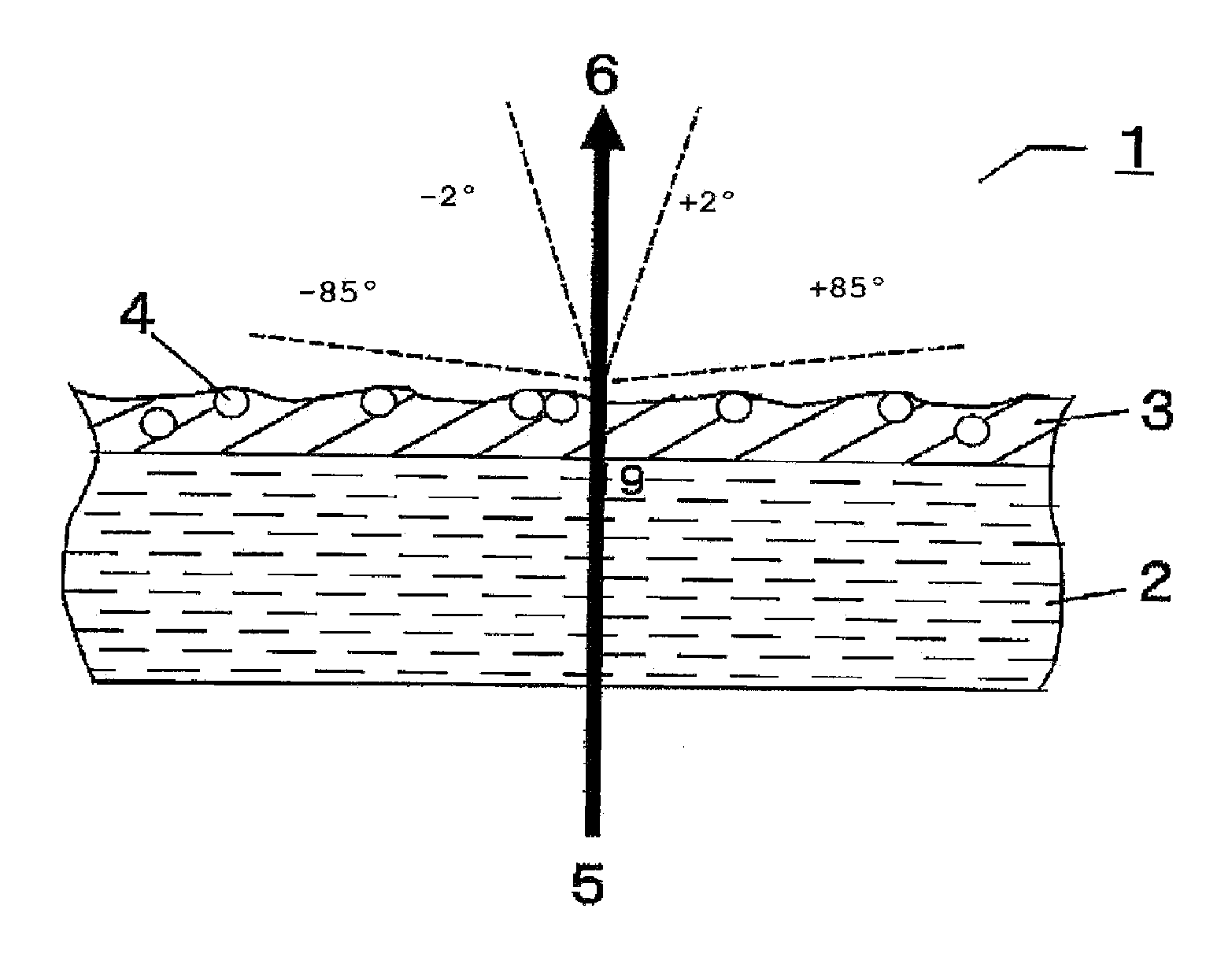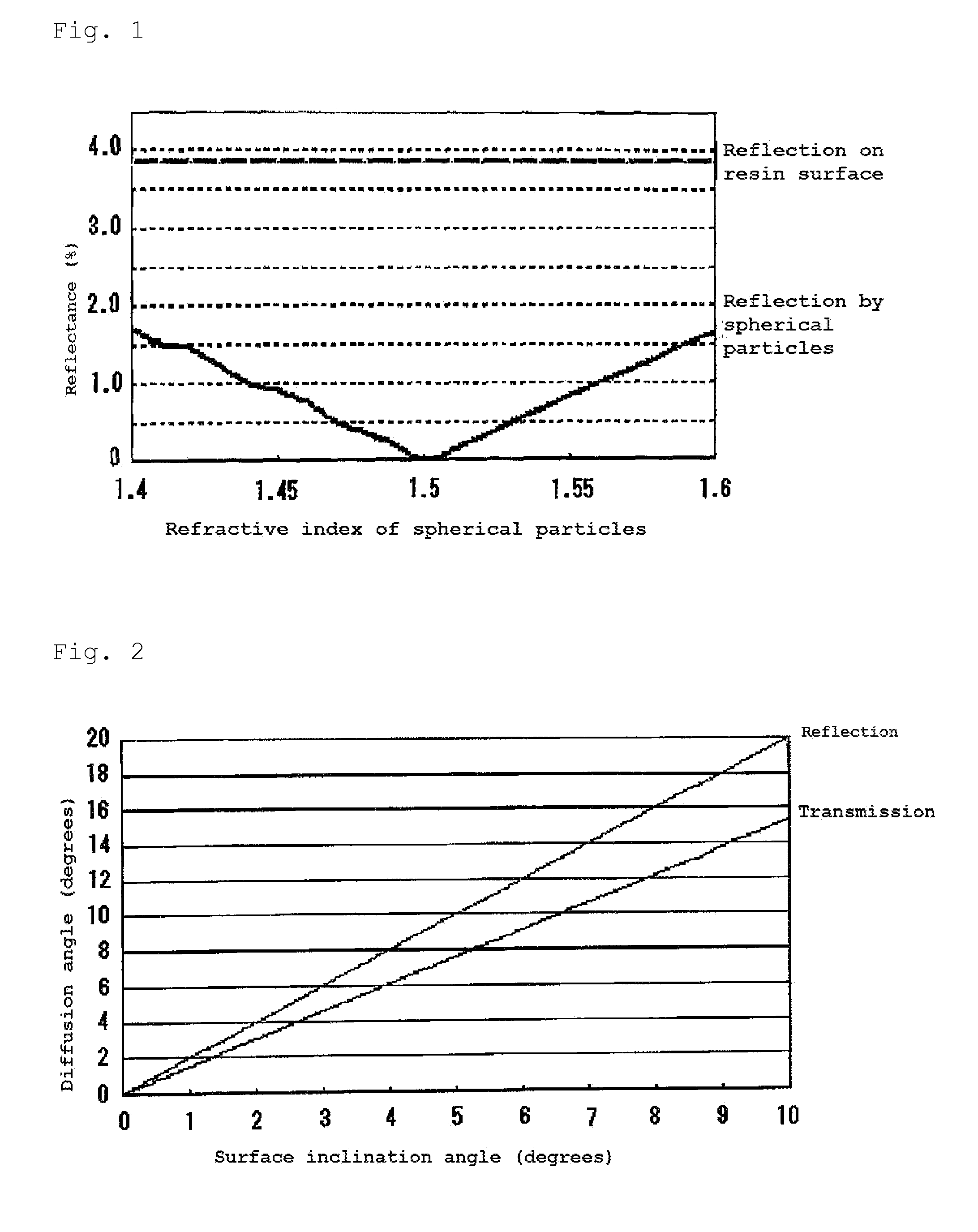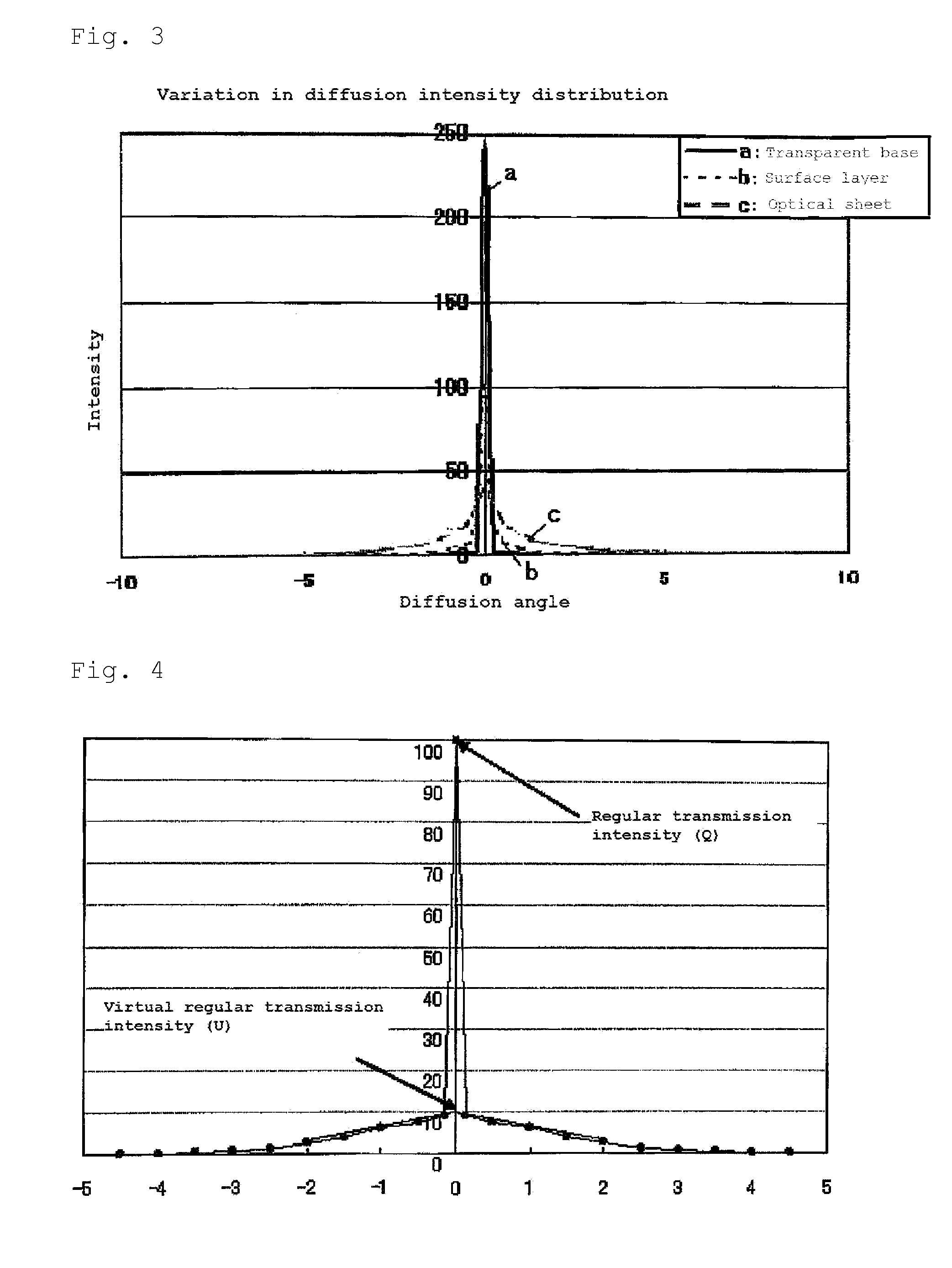Anti-glare sheet for liquid crystal display device
- Summary
- Abstract
- Description
- Claims
- Application Information
AI Technical Summary
Benefits of technology
Problems solved by technology
Method used
Image
Examples
production example 1
[0325]Triacetylcellulose (80 μm thickness, FujiFilm Corp.) was prepared as a transparent base material. The transparent resin used was a mixture of pentaerythritol triacrylate (PETA), dipentaerythritol hexaacrylate (DPHA) and polymethyl methacrylate (PMMA) (weight ratio: PETA / DPHA / PMMA=86 / 5 / 9) (refractive index: 1.51), polystyrene particles (refractive index: 1.60, mean particle size: 3.5 μm, (d75-d25) / MV=0.05) and styrene-acrylic copolymer particles (refractive index: 1.56, mean particle size: 3.5 μm, (d75-d25) / MV=0.04) were added thereto as translucent particles, at 18.5 and 3.5 parts by weight, respectively, with respect to 100 parts by weight of the transparent resin, IRGACURE 184 (product of BASF, Japan) was added as an initiator at 5 parts by weight, and a polyether-modified silicone oil (TSF4460, product of Momentive Performance Materials, Inc.) was added as a leveling agent at 0.04 part by weight.
[0326]A resin composition obtained by mixing a mixed solvent of toluene (boilin...
production example 8
[0329]Triacetylcellulose (80 μm thickness, FujiFilm Corp.) was prepared as a transparent base material.
[0330]The transparent resin used was pentaerythritol triacrylate (PETA, refractive index: 1.51), and there were added styrene-acrylic copolymer particles (refractive index: 1.51, mean particle size: 9.0 μm, (d75-d25) / MV=0.04) and polystyrene particles (refractive index: 1.60, mean particle size: 3.5 μm, (d75-d25) / MV=0.05) as translucent particles, at 10.0 parts by weight and 16.5 parts by weight, respectively, to 100 parts by weight of the transparent resin, and also IRGACURE 184 (product of BASF, Japan) as an initiator at 5 parts by weight and a polyether-modified silicone oil (TSF4460, product of Momentive Performance Materials, Inc.) as a leveling agent at 0.04 part by weight.
[0331]A resin composition obtained by mixing a mixed solvent of toluene (boiling point: 110° C., relative evaporation rate: 2.0) and cyclohexanone (boiling point: 156° C., relative evaporation rate: 0.32) (...
production example 9
[0334]An anti-glare sheet for a liquid crystal display device was fabricated in the same manner as Production Example 8, except that the content of the polystyrene particles as the translucent particles in Production Example 8 was changed to 6.5 parts by weight with respect to 100 parts by weight of the transparent resin, and the total coating film thickness was 11.5 μm.
[0335]The results of evaluation in the same manner as Production Example 1 are shown in Table 2.
Production Examples 27-29, Production Example 31
[0336]An anti-glare sheet for a liquid crystal display device was fabricated in the same manner as Production Example 8, except for changing the coating film thickness of the first diffusion layer to 3 μm, the type of transparent base material, the type of transparent resin in the first and second layers, the type and content of the translucent particles in the first layer, the type and content of the solvent in the first and second layers, the drying conditions for the first...
PUM
| Property | Measurement | Unit |
|---|---|---|
| Length | aaaaa | aaaaa |
| Thickness | aaaaa | aaaaa |
| Angle | aaaaa | aaaaa |
Abstract
Description
Claims
Application Information
 Login to View More
Login to View More - R&D
- Intellectual Property
- Life Sciences
- Materials
- Tech Scout
- Unparalleled Data Quality
- Higher Quality Content
- 60% Fewer Hallucinations
Browse by: Latest US Patents, China's latest patents, Technical Efficacy Thesaurus, Application Domain, Technology Topic, Popular Technical Reports.
© 2025 PatSnap. All rights reserved.Legal|Privacy policy|Modern Slavery Act Transparency Statement|Sitemap|About US| Contact US: help@patsnap.com



